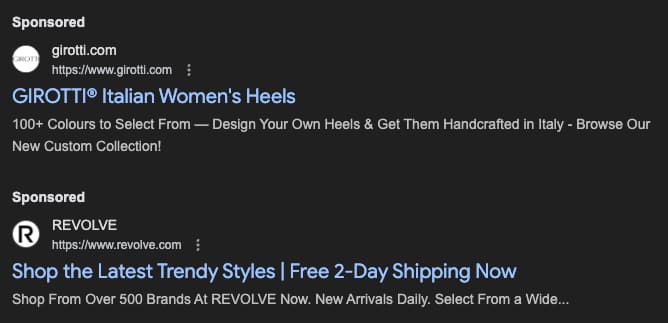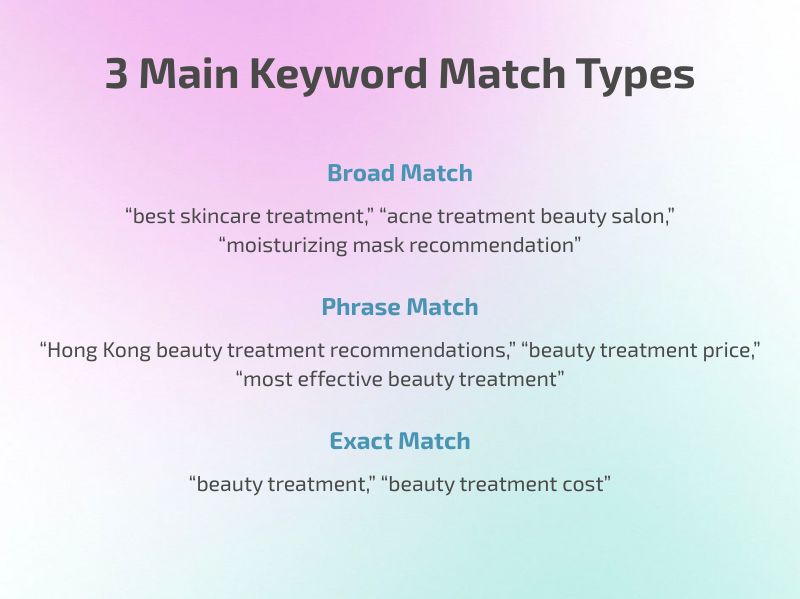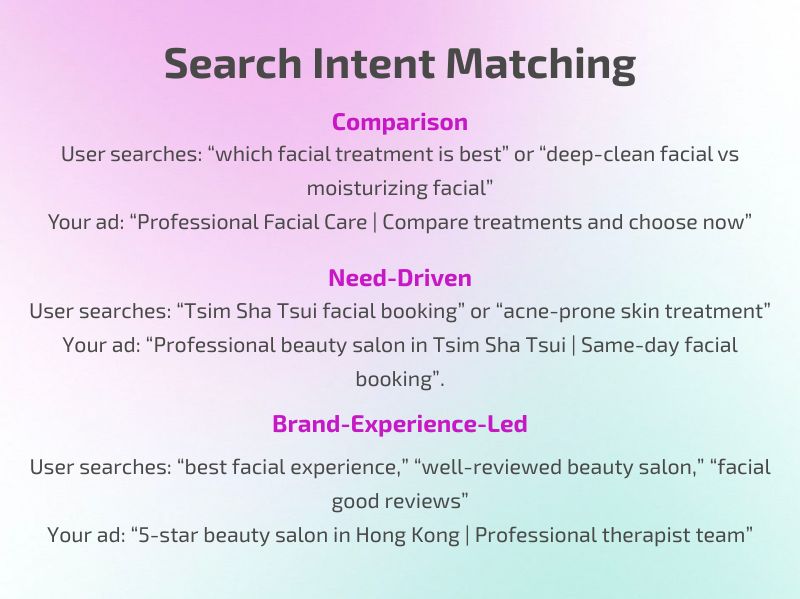Keyword Advertising: A Super Practical Introduction + Advanced Strategy
In business—whether you sell tutoring courses, gym memberships, or coffee beans—there’s one thing in common: most customers Google first. That’s why keyword advertising is so important. It puts you in front of potential customers at the very moment they type their question.
Jump to:
What is keyword advertising?

Keyword advertising (most commonly Google Ads Search ads) runs on a pay-per-click (PPC) model: when users search a keyword, your text ad may appear above or below the results; you pay only when someone clicks. Unlike SEO (organic rankings), PPC is immediate, controllable, and measurable—ideal for capturing short-term demand or testing new markets. For fundamentals, see curated beginner tutorials and how-to guides.
Why are keyword ads an especially “good deal” in Hong Kong?

Source: Statcounter
Because Google’s search market share in Hong Kong has long been high (90.87%), allocating budget to Google Search covers the largest pool of active demand. The latest data shows Google still holds a clear lead in 2025.
How to choose Keyword Match Types

Google offers three main match types: Broad, Phrase, Exact. Using beauty treatments as examples:
Broad Match: the loosest; scales fast, relies on negatives to control precision. Examples: “best skincare treatment,” “acne treatment beauty salon,” “moisturizing mask recommendation”.
Phrase Match: middle-ground; preserves word order and meaning. Examples: “Hong Kong beauty treatment recommendations,” “beauty treatment price,” “most effective beauty treatment”.
Exact Match: most precise; tightly aligned intent. Examples: “beauty treatment,” “beauty treatment cost”.
Three performance keys: Quality Score, bidding, and experience
1. Quality Score
Quality Score is a 1–10 diagnostic that gauges, at the keyword level, how useful your ad and landing page are to searchers. It isn’t a direct auction input, but it reflects relevance and user experience health, guiding adjustments to copy, keywords, and page content.
2. Bids and Ad Rank
Whether and where your ad appears depends on a combination of bid × estimated quality and other factors; improving relevance and experience often wins better positions at lower CPCs. Across recent benchmark reports, 2024–2025 CPC and CPL pressures have trended upward in many industries, so cost control relies even more on quality and intent management.
3. Landing page experience
Even great clicks will leak if the page loads slowly, the message is disjointed, or the form is too long. Make search intent → ad promise → on-page content a single, consistent story and your conversion rate will rise markedly.
Keyword research: focus on “intent”
Three suggested steps to start:
Categorize intent:
Transactional (e.g., “quote,” “price”), comparative (“vs,” “which is best”), problem-solving (“how to,” “method”), brand (your brand name + service).- Validate volume and difficulty: cross-check with Google Keyword Planner and non-Google tools.
Build a negative keyword list: block misaligned queries first—saving 20–30% of wasted spend is a common first-wave win.
“Intent alignment” templates (steal-and-use)

Example 1: Comparison
Search intent: users type “which facial treatment is best” or “deep-clean facial vs moisturizing facial”.
- Ad message: headline like “Professional Facial Care | Compare treatments and choose now”.
On-page content: show a comparison table (benefits, duration, price, suitable skin types) to help users decide quickly.
👉 User is comparing → ad promises “we’ll help you pick the right treatment” → site immediately provides comparison info.
Example 2: Need-driven
Search intent: e.g., “Tsim Sha Tsui facial booking” or “acne-prone skin treatment”.
Ad message: headline like “Professional beauty salon in Tsim Sha Tsui | Same-day facial booking”.
On-page content: provide quick-book buttons (WhatsApp / online form) plus real treatment cases or reviews to trigger immediate action.
👉 User wants to “solve the skin issue now” → ad replies “slots available today” → page offers fast booking options.
Example 3: Brand-experience-led
- Search intent: users type “best facial experience,” “well-reviewed beauty salon,” “facial good reviews”.
Ad message: headline like “5-star beauty salon in Hong Kong | Professional therapist team”.
On-page content: lead with screenshots of Google/social 5-star ratings and real testimonials, paired with a first-time offer CTA.
👉 User seeks “safety + trust” → ad promises “great reviews and professionalism” → site immediately shows reviews and an offer.
A 14-day starter plan for keyword ads
| Tasks | |
|---|---|
| Days 1–2 | Select 3 main search intents, list 30 keywords, build an initial negatives list |
| Days 3–4 | Create 2–3 ad groups; write multiple headline and description variants |
| Day 5 | Optimize the landing page (ensure clear CTA, reviews, case studies) |
| Days 6–7 | Install tracking (GA4 / GTM); set up form, WhatsApp, and call tracking |
| Days 8–14 | Check search terms daily to add negatives; tune bids; audit the three Quality Score elements |
Advanced optimization checklist (for active accounts)
Keywords match-mix: run Broad + Phrase in parallel and control precision with negatives; protect brand terms with Exact.
Ad schedule & geo: bid up or exclude based on converting cities and business hours.
RSA (Responsive Search Ads) weighting: pin 1–2 “must-show” headlines; let the system combine the rest.
Speed/consistency to page: LCP < 2.5s; reiterate keyword and promise above the fold (aligned with ad copy).
Reporting cadence: weekly for trends, daily for anomalies; systematize search terms → negatives/new keywords.
Cost realism: benchmark CPC/CPA/CTR for 2024–2025 across industries to judge whether to adjust CPA targets or narrow the intent pool.
Keyword advertising FAQ
Start by working backwards from your target CPA. For example, if you're willing to pay HK$400 per inquiry and estimate a 5% conversion rate, a CPC of ≈ HK$20 is acceptable. Use Keyword Planner to estimate your price and set a daily budget that generates statistically significant clicks (at least 50–100 clicks per week).
Most likely, the intention is inaccurate or there's too much friction at the destination. Check: Is the negation complete? Does the title deliver on its promise? Is the form too long?
It's best to run both simultaneously. PPC can instantly verify keyword conversions and feed SEO with real keyword data; SEO builds long-term free traffic assets for you.
You'll typically see initial traffic within 1-2 weeks, but it'll take 4-6 weeks for enough data to accumulate before you can determine which keywords and ads are most valuable.
Yes. Even if someone searches for your company name, they might see a competitor's ad first. Protecting your brand name with a low CPC is the most cost-effective investment.
- Regularly review your "Search Term Report" and add negative keywords.
- Disable keywords that generate high clicks but low conversion rates.
- Set region and time of day restrictions to avoid wasting money during inefficient times or locations.
Both are suitable, but the strategies differ:
B2B: Focus on generating high-quality leads (e.g., forms, phone calls).
B2C: Focus on immediate transactions or bookings (e.g., online stores, restaurants, spas).
It's okay in the short term, but not recommended long-term. PPC is like renting a storefront; if you stop, you lose traffic. SEO, social media, and email marketing are the "own assets" you can accumulate.
By improving your quality score. The closer your ad and landing page are to user needs, the more willing Google is to give you cheap clicks.
Yes, but we recommend starting with a small budget and a simple architecture, then gradually expanding once you're familiar with the data. Alternatively, you can hire an agency to help you build the initial structure and then maintain it yourself.
Key Points
Hong Kong uses Google as the primary search engine, so placing search ads can quickly reach active demand.
Intent first, keywords later: Use matching types and negation to control accuracy.
Cost increases are the norm, and CPA can be maintained by relying on quality scores, on-site experience, and structured accounts.
 Cookie preferences
Cookie preferences








 2x your advertising effectiveness: Master big data to optimize ad ROI
2x your advertising effectiveness: Master big data to optimize ad ROI
 Top 5 Best Ads in 2025 in Hong Kong
Top 5 Best Ads in 2025 in Hong Kong
 Hong Kong Outdoor Advertising Cost in 2026 | Adintime Report
Hong Kong Outdoor Advertising Cost in 2026 | Adintime Report
 Marketing Calendar 2026: Key Dates For Marketing Success
Marketing Calendar 2026: Key Dates For Marketing Success
 Baidu Advertising in Hong Kong - Tap Into Mainland China's Market
Baidu Advertising in Hong Kong - Tap Into Mainland China's Market
 The Most Widely-Read Magazine and Newspaper in Hong Kong
The Most Widely-Read Magazine and Newspaper in Hong Kong
 OOH /DOOH advertising in Hong Kong: Formats and Rates (2025 Update)
OOH /DOOH advertising in Hong Kong: Formats and Rates (2025 Update)
 Understanding YouTube Advertising Costs in 2025
Understanding YouTube Advertising Costs in 2025
 How much does LinkedIn Advertising Cost? (2025 Update)
How much does LinkedIn Advertising Cost? (2025 Update)
 Press Ad Basics: Types, Formats and Ad Price
Press Ad Basics: Types, Formats and Ad Price